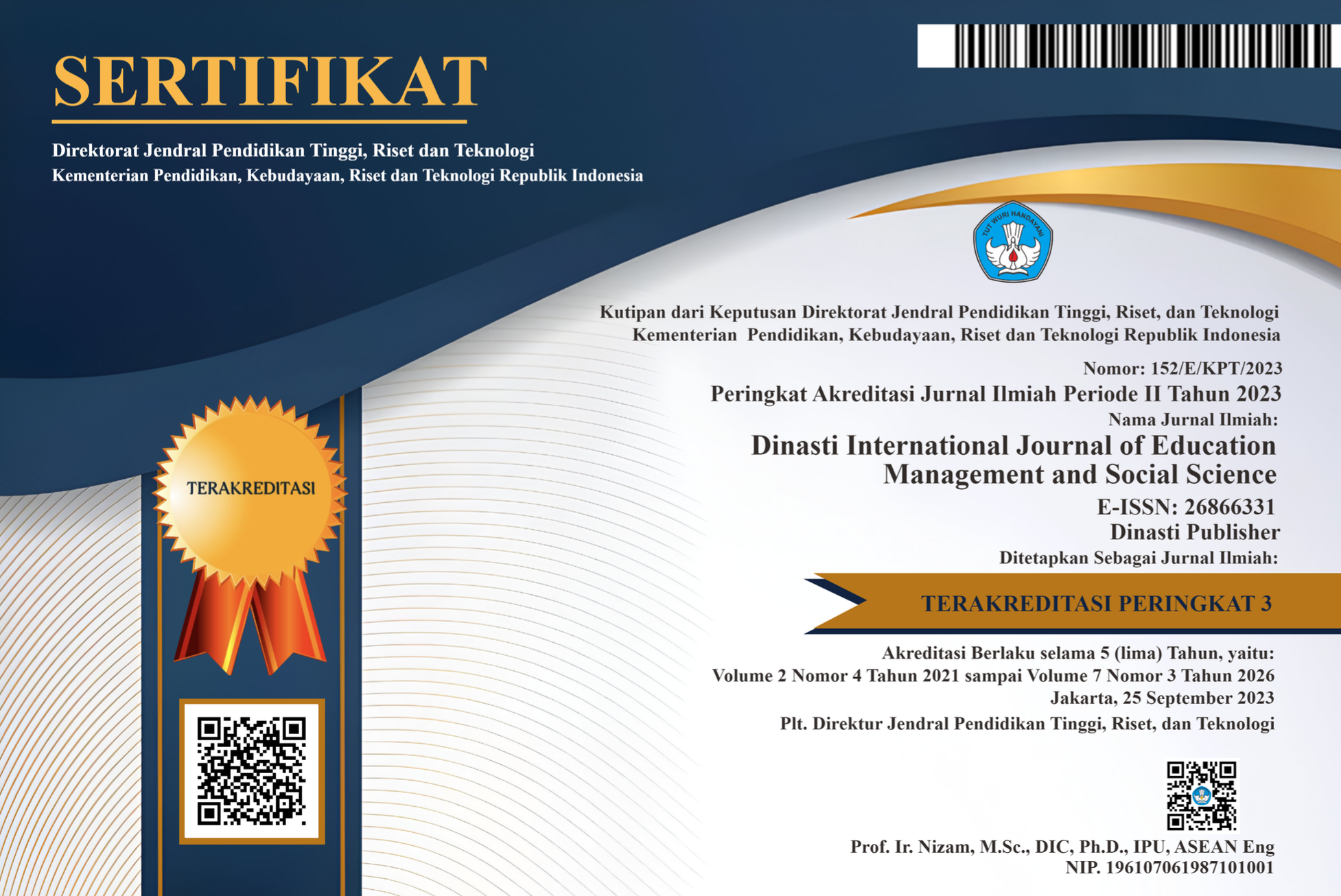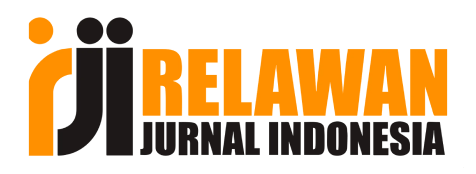Collaborative-Based Principal Guidance Management to Optimize Teacher Learning Groups: A Case Study at SDN Palasari, Cipanas District, Cianjur Regency
DOI:
https://doi.org/10.38035/dijemss.v6i4.4462Keywords:
Principal Guidance, Collaborative Methods, Teacher Study Group, Teacher Professionalism, Education ManagementAbstract
This study aims to analyze the management of school principal's guidance based on collaborative methods in optimizing the effectiveness of teacher learning groups at SDN Palasari, Cipanas District. The main focus of the research includes planning, organizing, implementing, supervising, and evaluating the guidance of school principals in supporting the development of teacher professionalism and improving the quality of learning. This study uses a qualitative approach with a case study method to understand in depth the process of implementing the principal's guidance in the context of elementary schools. Data were collected through in-depth interviews, participatory observations, and documentation studies. Data analysis was carried out using the Miles and Huberman interactive model, which included data reduction, data presentation, and inductive conclusions. The results of the study show that guidance planning is carried out through teacher needs analysis, competency mapping, and the preparation of mentoring and coaching-based programs. Organizing involves the formation of study groups by appointing competent coordinators and facilitators, as well as optimal use of resources. The implementation of guidance is carried out in a participatory manner through lesson study methods, peer teaching, and reflective discussions based on digital technology to strengthen teachers' professional interactions. Supervision is implemented through classroom observation, analysis of learning documents, and joint reflection to ensure program effectiveness and support continuous improvement. The evaluation was carried out formatively and summatively using various instruments, such as satisfaction surveys, reflective interviews, and classroom supervision, to measure the impact of the program on improving teacher competence and student learning outcomes. The findings of this study show that a systematic and sustainable collaborative approach under the guidance of principals contributes significantly to increasing the effectiveness of teacher-learning groups. This case study confirms that collaborative-based guidance of school principals can build a culture of teacher professionalism, encourage learning innovation, and contribute to improving the quality of education in schools.
References
Adrias, & Ruswandi, A. (2025). Desain Penelitian Kuantitatif, Kualitatif, dan Mix Method. Rajawali Pers.
Anderson, T. (2008). The theory and practice of online learning. Athabasca University.
Anriani, S. R., Hasanuddin, H., & Alam, S. P. (2021). Strategi kolaboratif dalam manajemen pelayanan bimbingan dan konseling di sekolah. Jurnal Bimbingan Konseling Dan Psikologi, 1(1), 48–62.
Aruan, A., Kabry, F. R., Hsb, M. M. S., Tun’nisa, M., Lubis, Z., & Darmansah, D. (2025). Peran Motivasi Kerja dalam Meningkatkan Kinerja Guru di SMP Bina Siswa Laud Dendang. Jurnal Manajemen Dan Pendidikan Agama Islam, 3(1), 249–264. https://doi.org/https://doi.org/10.61132/jmpai.v3i1.857
Avalos, B. (2011). Teacher professional development in teaching and teacher education over ten years. Teaching and Teacher Education, 27(1), 10–20. https://doi.org/https://doi.org/10.1016/j.tate.2010.08.007
Barth, R. S. (1990). Improving schools from within: Teachers, parents, and principals can make the difference. ERIC.
Bowen, G. A. (2009). Document analysis as a qualitative research method. Qualitative Research Journal, 9(2), 27–40. https://doi.org/10.3316/QRJ0902027
Buaja, T., Wiyono, B. B., & Timan, A. (2025). Integrating Segulaha Traditional Values in School Leadership: a Transformational Approach to Educational Excellence and Sustainable Development Goals (SDGs). Journal of Lifestyle and SDGs Review, 5(3), 1–18. https://doi.org/https://doi.org/10.47172/2965-730X.SDGsReview.v5.n03.pe05181
Bush, T. (2020). Theories of educational leadership and management.
Creswell, J. W. (2015). Educational Research (Planning, Conducting, and Evaluating Quantitative and Qualitative Research) (Fifth Edit). Pearson Education, Inc.
Darling-Hammond, L., Hyler, M. E., & Gardner, M. (2017). Effective teacher professional development. Learning Policy Institute.
Denzin, N. K., & Lincoln, Y. S. (1996). Handbook of qualitative research. Journal of Leisure Research, 28(2), 132.
Desimone, L. M., & Pak, K. (2017). Instructional Coaching as High-Quality Professional Development. Theory Into Practice, 56(1), 3–12. https://doi.org/10.1080/00405841.2016.1241947
DuFour, R., & Eaker, R. (2009). Professional learning communities at work tm: best practices for enhancing students achievement. Solution Tree Press.
Fullan, M. (2016). The new meaning of educational change. Teachers college press.
Glickman, C. D. (2002). Leadership for learning: How to help teachers succeed. ASCD.
Guest, G., Bunce, A., & Johnson, L. (2006). How many interviews are enough? An experiment with data saturation and variability. Field Methods, 18(1), 59–82. https://doi.org/https://doi.org/10.1177/1525822X05279903
Guskey, T. R. (2002). Professional development and teacher change. Teachers and Teaching, 8(3), 381–391. https://doi.org/https://doi.org/10.1080/135406002100000512
Hargreaves, A., & O’Connor, M. T. (2018). Collaborative professionalism: When teaching together means learning for all. Corwin Press.
Hobbs, S., Banerjee, R., Miller, G. E., Dumam, L., Kamnkhwani, R., Ilori, G. C., & Cuthbert, C. (2025). Outcomes of a Virtual Community of Practice with Community Navigators Aimed at Fostering Family–School–Community Partnerships. Social Sciences, 14(3). https://doi.org/10.3390/socsci14030162
Karimi, H., & Khawaja, S. (2025). Leadership in the digital age: Examining school websites as a window into educational practices. International Journal of Innovative Research and Scientific Studies, 8(1), 2544–2553.
Kleiner, A., Smith, B., Dutton, J., Cambron-McCabe, N. H., Senge, P. M., & Lucas, T. (2012). Schools That Learn: A Fifth Discipline Fieldbook for Educators, Parents, and Everyone Who Cares About Education. Hachette UK.
Kraft, M. A., Blazar, D., & Hogan, D. (2018). The effect of teacher coaching on instruction and achievement: A meta-analysis of the causal evidence. Review of Educational Research, 88(4), 547–588. https://doi.org/https://doi.org/10.3102/0034654318759268
Kraft, M. A., & Papay, J. P. (2014). Can professional environments in schools promote teacher development? Explaining heterogeneity in returns to teaching experience. Educational Evaluation and Policy Analysis, 36(4), 476–500. https://doi.org/https://doi.org/10.3102/0162373713519496
Lewis, Z. (2021). Policy and the image of the child: a critical analysis of drivers and levers in English early years curriculum policy. Early Years, 41(4), 321–335. https://doi.org/10.1080/09575146.2018.1501552
Lieberman, A., & Pointer Mace, D. (2010). Making practice public: Teacher learning in the 21st century. Journal of Teacher Education, 61(1–2), 77–88.
Merriam, S. (2009). Qualitative research: A guide to design and implementation san fransisco: John willey & sons inc.
Miles, M. B., Huberman, Michael, A., & Saldaña, J. (2014). Qualitative Data Analysis: A Methods Sourcebook (Third edit). SAGE Publications Inc.
Mydin, A. A., Anoar, A., & Romly, R. (2025). Driving educational innovation: The role of transformational leadership and professional learning community in Malaysian vocational college. Innovations in Education and Teaching International, 0(0), 1–17. https://doi.org/10.1080/14703297.2025.2471978
Okoko, J. M., & Campbell-Chudoba, R. (2025). The role of inter-organizational collaborations and partnerships in leading K-12 education of ethnically and linguistically diverse newcomers. Journal of Professional Capital and Community, ahead-of-p(ahead-of-print). https://doi.org/10.1108/JPCC-01-2025-0001
Patton, M. Q. (2014). Qualitative research & evaluation methods: Integrating theory and practice. Sage publications.
Prestridge, S. (2017). Examining the shaping of teachers’ pedagogical orientation for the use of technology. Technology, Pedagogy and Education, 26(4), 367–381. https://doi.org/10.1080/1475939X.2016.1258369
Senge, P. M. (2006). The fifth discipline: The art and practice of the learning organization. Broadway Business.
Sergiovanni, T. J. (1987). The principalship: A reflective practice perspective. ERIC.
Serrano, W. T. (2025). Lived Experiences of Teachers During Their Career Transitions from Beginning Teachers to Highly Proficient Teachers. International Journal of Open-Access, Interdisciplinary & New Educational Discoveries of ETCOR Educational Research Center, VI(1), 402–421.
Setyawanto, A., Hariyadi, B., & Tontowi, T. (2023). Peran Kepala Sekolah Dalam Pembelajaran Kolaboratif Guru. Jurnal Al-Murabbi, 9(1), 261–277. https://doi.org/https://doi.org/10.35891/amb.v9i1.4849
Tisdell, E. J., Merriam, S. B., & Stuckey-Peyrot, H. L. (2025). Qualitative research: A guide to design and implementation. John Wiley & Sons.
Vescio, V., Ross, D., & Adams, A. (2008). A review of research on the impact of professional learning communities on teaching practice and student learning. Teaching and Teacher Education, 24(1), 80–91.
Vygotsky, L. S. (1978). Mind in society: The development of higher psychological processes (Vol. 86). Harvard university press.
Yin, R. K. (2017). Case study research and applications. SAGE Publications US.
Downloads
Published
How to Cite
Issue
Section
License
Copyright (c) 2025 Susi Susi, Helmawati Helmawati

This work is licensed under a Creative Commons Attribution 4.0 International License.
Authors who publish their manuscripts in this journal agree to the following conditions:
- The copyright on each article belongs to the author(s).
- The author acknowledges that the Dinasti International Journal of Education Management and Social Science (DIJEMSS) has the right to be the first to publish with a Creative Commons Attribution 4.0 International license (Attribution 4.0 International (CC BY 4.0).
- Authors can submit articles separately, arrange for the non-exclusive distribution of manuscripts that have been published in this journal into other versions (e.g., sent to the author's institutional repository, publication into books, etc.), by acknowledging that the manuscript has been published for the first time in the Dinasti International Journal of Education Management and Social Science (DIJEMSS).















































